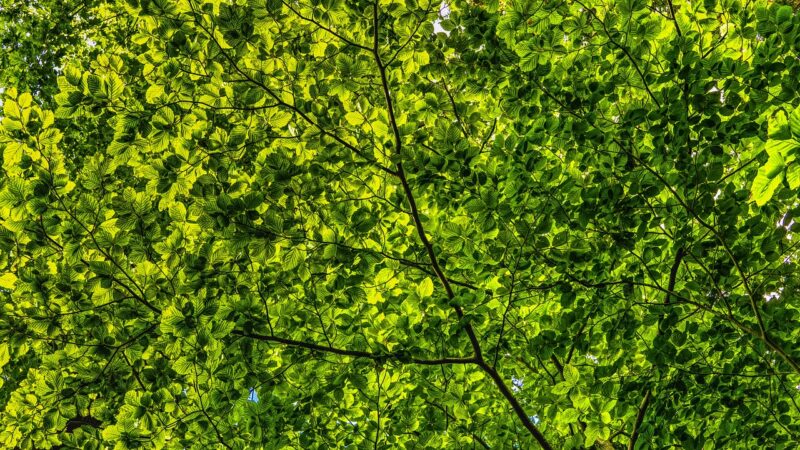The Secret Life of Trees and Their Role in Creating a Healthier Planet
November 12, 2024

Trees are often seen as mere objects of beauty in our landscapes, but they lead remarkably complex lives that play an integral role in sustaining our planet. Beyond providing shade and oxygen, trees serve as essential components of ecosystems, influencing climate, air quality, and our overall well-being. In this article, we delve into the fascinating world of trees, uncover their secret lives, and explore how they contribute to creating a healthier planet.
1. The Anatomy of Trees: Understanding Their Structure
Trees are incredible organisms with intricate structures that allow them to thrive in various environments. The anatomy of a tree consists of the following key components:
- Roots: These anchor trees into the ground and absorb water and nutrients from the soil. The root system can extend wide and deep, supporting the tree’s stability and access to essential resources.
- Trunk: The trunk provides support and transports nutrients and water between the roots and leaves via a system of vessels called xylem and phloem. The bark protects the trunk from pests and environmental hazards.
- Leaves: The leaves are the sites of photosynthesis, where trees convert sunlight, carbon dioxide, and water into glucose and oxygen. This process is vital for life on Earth, as it produces the oxygen we breathe and removes carbon dioxide from the atmosphere.
Understanding the anatomy of trees helps us appreciate their role in ecosystems and the environment.
2. Photosynthesis: The Lifeline of Trees
The process of photosynthesis is the heart of a tree’s ecosystem functions. During photosynthesis, trees take in carbon dioxide from the atmosphere and convert it into glucose, which serves as energy for growth and development.
The byproduct of this process is oxygen, which is released into the atmosphere, providing the essential gas for animals and humans to breathe. Remarkably, a single mature tree can produce enough oxygen for two human beings for an entire year.
Additionally, trees play a major role in mitigating climate change by absorbing carbon dioxide, a primary greenhouse gas responsible for global warming. By sequestering carbon and storing it within their biomass, trees act as natural carbon sinks, combating the effects of human-induced climate change.
3. The Role of Trees in Biodiversity
Trees serve as vital habitats for countless species, supporting rich biodiversity in ecosystems. Forests are home to numerous animals, birds, insects, and other plant species that depend on trees for food, shelter, and breeding grounds. For example:
- Birds: Many bird species rely on trees for nesting sites and sources of food, such as fruits and insects. They, in turn, contribute to the pollination of flowers and the dispersal of seeds.
- Insects: Various insects, including beetles and butterflies, thrive in forested environments where they interact with trees by helping in the pollination process or decomposing fallen leaves.
- Mammals: Many larger mammals, like deer and bear, find food and shelter in forests, showcasing the intertwined relationships within their habitats.
By preserving trees and forests, we ensure the survival of countless species and maintain the balance of natural ecosystems.
4. Trees and Air Quality: Filtering Our Environment
Trees act as natural air filters, improving urban environments affected by pollution. They absorb harmful pollutants such as sulfur dioxide, ammonia, and nitrogen oxides, while also trapping particulate matter on their leaves and bark.
This natural filtration process plays a significant role in enhancing air quality, reducing respiratory problems, and promoting better health for urban residents. For instance:
- Oxygen Production: As previously mentioned, trees contribute significantly to the oxygen supply, making cities more breathable.
- Heat Reduction: By providing shade and releasing moisture through transpiration, trees help lower temperatures in urban areas known as heat islands, which can reduce the need for air conditioning and lower energy costs.
Incorporating trees in city planning and design is critical to promoting healthier urban environments, enhancing quality of life, and combating climate-related challenges.
5. The Importance of Forests in Climate Regulation
Forests, particularly tropical rainforests, play an unparalleled role in climate regulation. They store large amounts of carbon, regulate water cycles, and contribute to precipitation patterns. Here’s how forests help maintain a healthier planet:
- Carbon Sequestration: Forests absorb carbon dioxide, reducing the concentration of greenhouse gases in the atmosphere. This process is crucial for mitigating climate change effects and maintaining global temperatures.
- Water Cycle Regulation: Trees extract water from the soil through their roots and release it back into the atmosphere through transpiration. This helps maintain local and global water cycles, affecting rainfall patterns and preventing droughts.
- Soil Conservation: Tree root systems prevent soil erosion by stabilizing the ground, enhancing soil fertility by improving nutrient cycling.
Maintaining and restoring forests is thus vital to global efforts toward climate change mitigation and sustainability.
6. How You Can Help: Contributing to Tree Conservation
Every individual has the power to contribute to the protection and planting of trees, fostering a healthier planet. Here are some actionable ways to make an impact:
- Plant Trees: Participate in community tree-planting initiatives or plant trees in your backyard. Select native species, which are best suited for local ecosystems and require less maintenance.
- Support Organizations: Donate or volunteer for non-profit organizations dedicated to reforestation and tree conservation efforts around the globe.
- Engage with Policy: Advocate for policies that prioritize tree conservation, responsible land use, and climate action at local, state, and national levels.
- Educate Others: Share knowledge about the importance of trees and forests. Encourage your community to recognize the value of trees for sustaining a healthier planet.
By taking these steps, we can each play a significant role in protecting the trees that nurture our world.
Conclusion: The Indispensable Role of Trees
Trees are not just silent witnesses to human life; they are dynamic, living entities that foster our planet’s health and future. Understanding their secret lives enhances our appreciation for their existence and responsibilities toward their preservation.
In conclusion, recognizing the multifaceted roles trees play in our ecosystems can motivate us to advocate for their conservation actively, ensuring they continue to thrive for generations to come. Together, we can all work to create a healthier planet, one tree at a time.







